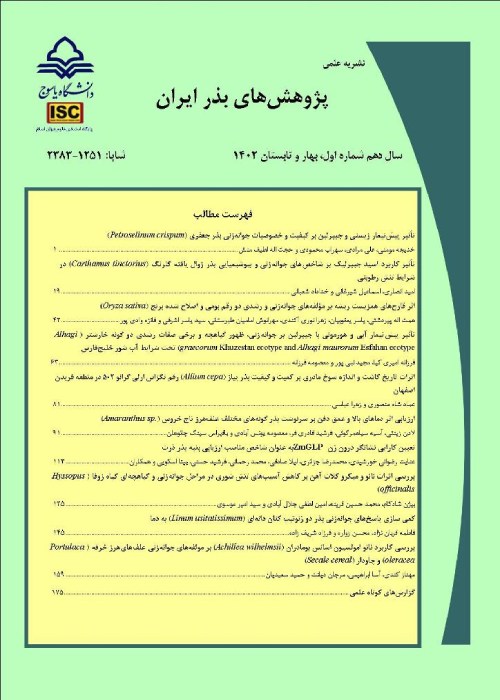The Effect of Chilling and Gibberellic Acid on the elimination of Schrophularia striata Seed Dormancy in Different Habitats of Ilam Province
Schrophularia striata is one of the medicinal plants of the Scrophulariaceae family and contains phenolic compounds. Locals have traditionally used this herbal medicine to treat infections caused by wounds, gastrointestinal diseases, and eye diseases. Due to excessive consumption by indigenous people and climate change, especially increasing temperature, the cold required to eliminate seed dormancy is not presently available and its germination and growth has decreased. Therefore, this plant is at the risk of extinction. Since this plant is propagated in natural habitats through seed and due to deep seed dormancy, evaluation of different seed dormancy methods is necessary for conservation and domestication of this species. In this study, suitable methods to eliminate seed dormancy of this plant using chilling and gibberellic acid treatments were studied on the seeds collected from different habitats of Ilam province.
To investigate the effect of using chilling and gibberellic acid on Schrophularia striata dormancy, a split plot factorial experiment based on completely randomized design with four replications was conducted at the seed laboratory of Yasouj University in 2018. The first factor included the duration of moist chilling period (0, 4, 8, 12 and 16 weeks), the second factor included gibberellic acid (0, 300 and 600 mg/L) and the third factor included five habitats (Ilam, Ivan, Mehran, Abadan and Dehloran).
The results showed that the 16-week Chilling and zero gibberellic acid treatments had the highest germination percentage in all habitats, as the percentage of germination in Mehran, Ivan, Ilam, Abadan and Dehloran habitats was 66, 50, 36, 30 and 25%, respectively. Also, the highest germination rate was observed in all habitats at 16 weeks chilling and zero mg/L gibberellic acid concentration. The highest germination uniformity was obtained at 16 and 12 weeks of chilling.
Chilling period duration was effective on germination percentage and rate and with increasing chilling period, germination percentage and rate increased. This indicates that the seeds studied had some degree of physiological dormancy, and the seed of higher altitude habitats required longer chilling periods than those of the lower ones for germination. Also, according to the results of this experiment, chilling periods above 16 weeks should be used to increase germination percentage.
- حق عضویت دریافتی صرف حمایت از نشریات عضو و نگهداری، تکمیل و توسعه مگیران میشود.
- پرداخت حق اشتراک و دانلود مقالات اجازه بازنشر آن در سایر رسانههای چاپی و دیجیتال را به کاربر نمیدهد.



